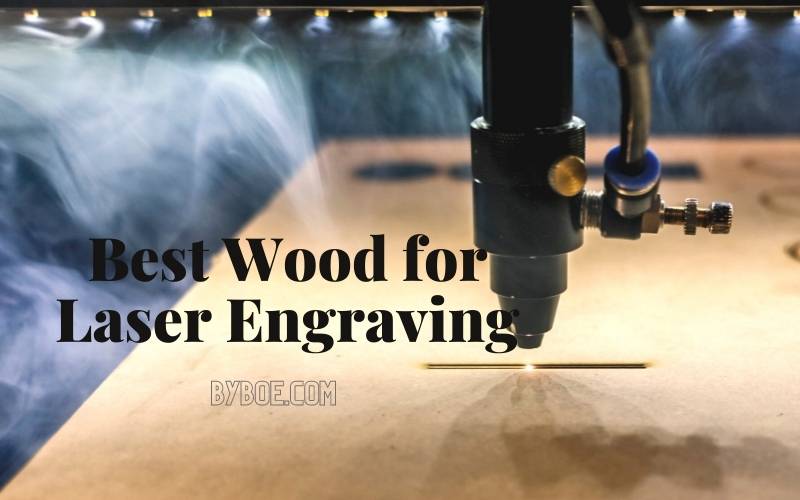When it comes to laser engraving, there is no one-size-fits-all wood. Different types of wood will result in varying levels of quality and durability when engraved. Some woods are better suited for laser engraving than others, so it is essential to research before you begin carving.
In this article, Byboe will show you the Best Wood for Laser Engraving, you will find the right wood for your project in our list.
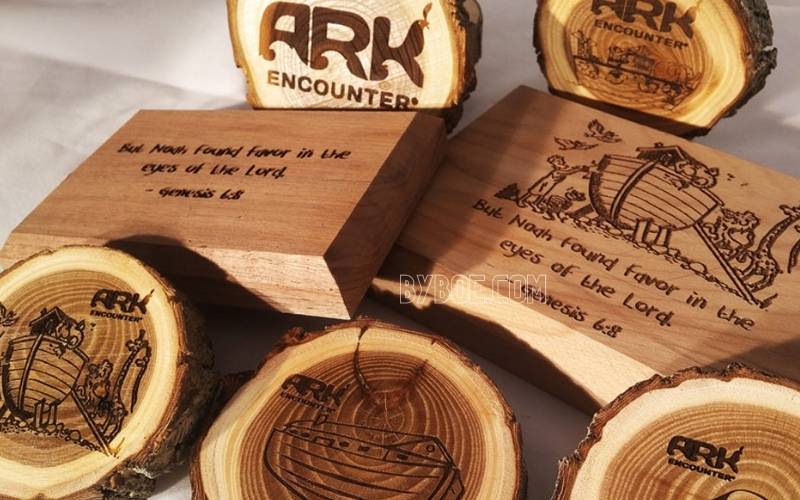
Table of Contents
- 1 Best Types Of Wood For Engraving in 2023
- 2 Factors to Consider When Choosing the Best Wood Laser Engraving Machine
- 3 The Difference Between Hardwood and Softwood
- 4 How Do You Determine the Resin Content of Your Wood?
- 5 Best Wood for Laser Engraving vs Hand Engraving: FAQs
- 6 Best Wood for Laser Engraving: Conclusion
Best Types Of Wood For Engraving in 2023
Alder
Alder is a softwood that is resistant to streaking. Alder wood can develop knots, so be sure to check those areas before you choose a piece to engrave.
Cherry Wood
Cherry wood is a popular choice for making furniture and cabinets. It can also be used for engraving. The cherry wood’s light brown color will turn pleasantly darker as it ages if engraved. Cherry wood has a consistent grain, so there is no need to worry about cracking.
Maple
Maple, like cherry and Alder, has a tight, smooth grain. It is also hard enough to be used as an engraving wood. It is strong and can withstand stains well. It is, therefore, suitable for artistic engraving.
Pinewood
Because pinewood is soft, it makes engraving easy. Pinewood is smooth and easy to engrave. But there are two things you should be aware of.
Pine is a knotty wood that can affect the quality of engravings. Pine is a resinous material, so it’s essential to avoid too much resin.
Walnut
For all woodworking projects, walnut wood is a favorite. Engraving is easy with walnut wood’s hard work and rich chocolate-brown coloring.
Basswood
Laser engraving is possible with basswood. Basswood is one of the softest hardwoods you will find. It cuts easily and can be stained and finished with ease. It is light and can withstand laser cutting. If you are looking for the Best Wood for Laser engraving, you should try it.
Balsa
Laser engraving is possible with Balsa. Balsa is easy to cut and will not be challenging to work with. It is very well suited for staining, painting, and other finishing. Balsa is incredibly soft, so you must be careful when handling it. It is seen as the Best Wood for Laser Cutting and Engraving.
Veneer
Laser engraving allows for intricate patterns to be made on wood veneer. Laser engraving is possible on a facade made from many different kinds of wood.
Plywood
Hand engraving plywood can be rugged. Plywood responds well to laser engraving. Laser engraving is best done with Birch plywood. If you are looking for the Best Wood to Use for Laser Engraving, why you don’t try it.
Engineered wood
Engineered wood doesn’t have a grain. Laser engraving is possible with particleboard and medium-density fiberboard (MDF). Laser engraving on MDF can produce satisfactory results because it is denser than plywood.
Cork
Cork is not considered a type of wood. It is made from the core of a tree trunk. Cork yields such good results a particular grade is called laser cork and can be used to make laser-engraved items, like pinboards, coasters, and wall decorations.
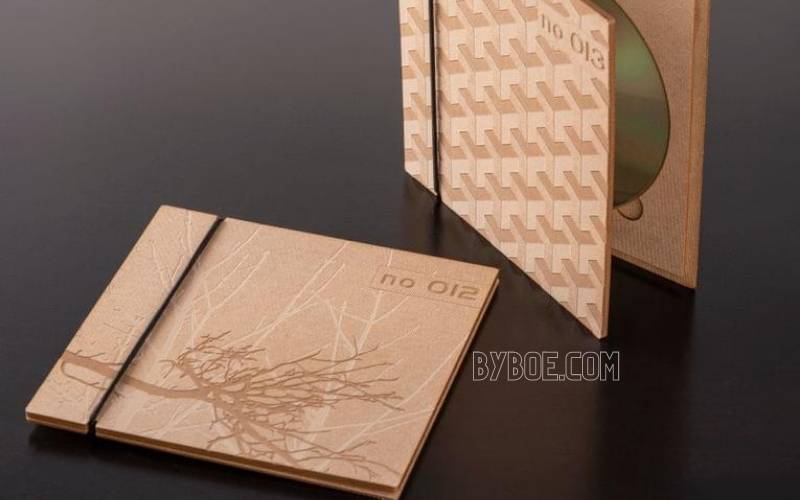
Factors to Consider When Choosing the Best Wood Laser Engraving Machine
Wood is revered because it is natural and authentic. Wood is unique in its use in furniture, paintings, and key holders.
Wood is a raw material and can cause problems with your laser projects. Although it will take some time to learn how to work with wood, it is possible to get its hang if you persevere.
Two important considerations should be made when selecting the wood for laser engraving.
- Resin content
- Streaking
Resin content
As protection against insects and disease, the resin is a viscous substance or solid that trees release. The resin produced by resinous wood is typically higher than that of non-resinous types.
These woods are mostly softwood species, such as pine, cedar, and firewood. Hardwoods like Alder, apple, Alder, and birch are often associated with non-resinous species, such as ash, elms, birches, madrones, walnuts, oak, and locust.
Laser engraving work is dependent on wood’s resin content. Wood burns differently depending on how much resin it contains. Wood with high resin content will burn darker.
The laser beam first burns the resin and then drives it into the wood. Low resin content will cause a minor burn. For a deeper burn, select wood with high resin content. Cherry and Alder are the most popular. If you prefer lighter engravings, choose wood with low resin content.
How can you tell if your wood contains high resin or low?
A quick burn test of your wood plaque is the best and easiest way to determine its resin content. You can engrave your logo on the back of the material or anywhere else that doesn’t impact the customization of wood.
This will allow you to see if the engraving is dark or light. This will help you promote your brand even further. This is how you kill two birds with one stone.
You can also compare the color of the wood with the plaque to determine if it has high resin content. It is less resin-rich if it is lighter.
It indicates high resin content if it is darker. If you have been in the business for a while, this technique is only accurate. For beginners, choose option 1.
Contrast is better with lighter wood.
Lighter wood will produce more appealing engravings, which is a truth to be told. The base of a laser-engraved product made from wood doesn’t change, unlike other materials such as paper.
You cannot alter it to your liking. The base color of an engraved product will be the same as the original wood color.
This is because darker wood can obscure your laser marks, making it difficult to read text and designs on the product.
A lighter wood produces a deeper, darker burn, contrasting beautifully with the surrounding materials. Your preferences and needs will ultimately determine which wood you choose.
You may get different engravings even though you used the same laser engraving settings and wood. This could indicate that the tree was cut in fall or winter.
Trees naturally drop their resins towards their trunks to prepare for cold weather. The resin returns to its original position once the cold has passed.
Streaking
Natural lines are the orientation of wood-cell fibers. These lines can be interlocked, straight, diagonal, uneven, wavy, or twisted. No matter what shape the lines are, choose wood with some consistency.
This helps to mask streaks better. Laser engraving is not for streaks. Because they distract from the engraving, streaks are a no-no in laser engraving.
When looking at engraved wood, you will notice the streaks more than the actual engraving. You want wood with minimal streaking and consistent grain.
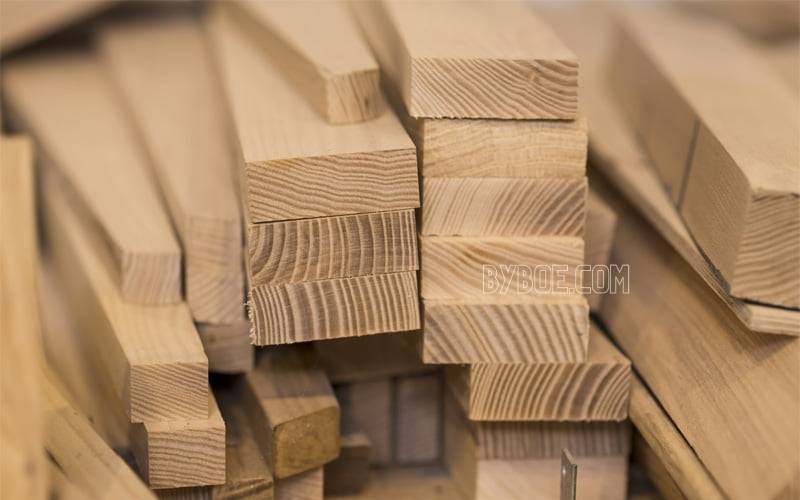
The Difference Between Hardwood and Softwood
The best way to tell the difference between hardwoods and softwoods is not to do a molecular analysis. These are deciduous trees. Softwood trees are evergreens like pine and spruce.
Hardwood is heavier and darker than other woods and can last decades. It’s also weather-resistant. This wood is used to make high-end furniture.
Softwoods, on the other hand, are lighter and more affordable. They also need to be treated for weather resistance to ensure they last at least ten years. When cut, softwoods have a lower impact on the environment and can be used as construction materials.
There are exceptions to every rule. Some softwoods can be more challenging than others hardwoods and vice versa. Three wood species are better for laser cutting and engraving and produce excellent results.
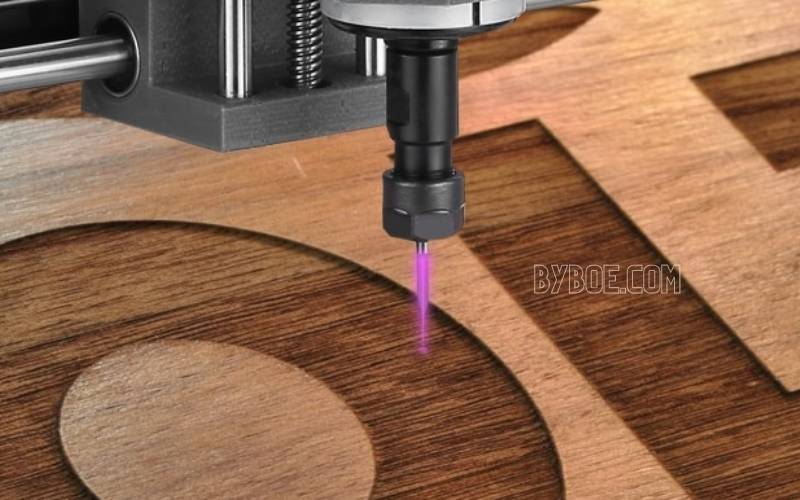
How Do You Determine the Resin Content of Your Wood?
You can find this information by:
Quick Burn Test of Your Wood Plaque
It is also possible to visually inspect it by comparing it to the actual wood species.
Minimal Wood Streaks
The natural lines in the wood determine the orientation of wood-cell fibers. They can take one of the following forms:
- Irregular
- Interconnected
- Straight
- Diagonal
- Twisted
- Wavy
No matter what shape the lines are, I recommend choosing wood that is consistent in its appearance. Laser engraving is a way to make wood look better.
The reason is that streaks attract more attention than accurate engravings, much like the old saying, The first appearance counts a lot.
Choose Wood With Minimal Streaking.
Thick Wood: 0.5-12mm
This is an important consideration when selecting suitable wood for laser engraving.
If you don’t want to cause damage to the machine, some materials have a very thick thickness.
Laser cutters can only cut wood between 0.5 and 12mm thick.
A CNC router cannot handle thick materials, but it can with the right tools. Choose fabrics that are as thick as your laser cutter will cut.
Wood in Lighter Colors
Lighter wood is the best choice when searching for the perfect wood. This is important because dark woods can obscure laser etching marks.
This makes it challenging to see engraved text and photos.
Because it is lighter, your photos and text will be more visible.
Choose According to the Power of Your Laser Cutter
Choose a laser cutter to cut your materials when choosing materials for your laser engraving projects.
Laser cutters typically have a power rating between 30W and 120W.
Best Wood for Laser Engraving vs Hand Engraving: FAQs
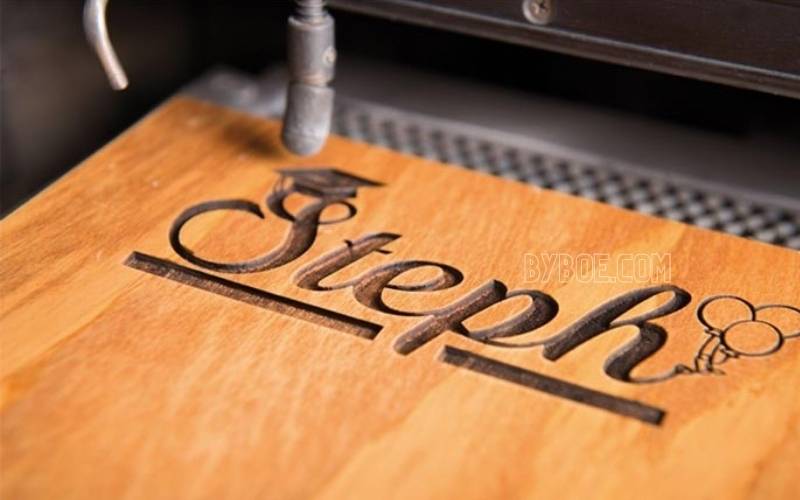
Can a Laser Engraver Be Used to Cut Wood?
Laser cutter and laser engraver are two different machines. Both machines are the same. Lasers can be used to engrave or cut simultaneously.
This depends on the primary purpose of the laser. If your laser is mainly used for engraving, it will be called a laser engraver. Laser cutters are those that do a lot of cutting with your laser. A laser engraver machine is capable of cutting wood.
Can a 40w Laser Be Used to Cut Wood?
Yes, a 40W laser is capable of cutting wood. It depends on the thickness of the material. A 40W laser can cut wood up to 1/4 inch thick.
Can a 5-watt Laser Cut Wood?
An upgrade to your laser machine is possible with a 5W diode laser. It can cut and engrave wood materials like plywood and MDF. They can cut wood materials up to 1/6 inches thick and are used primarily for etching.
Can You Laser Cut MDF?
My answer is a big YES! Only MDF up to 1/4 inch thick can cut through. You will need to use a slower speed, around 2% maximum power, and a PPI of 200.
Laser Cutting Plywood?
Lasers can cut through wood, but glue is difficult to cut. Lasers have difficulty cutting through plywood because it is made of cement. Laser-cutting plywood is possible, but inconsistencies within the plywood can cause problems.
Best Wood for Laser Engraving: Conclusion
There is no definitive answer as to the best type of wood for laser engraving. Each piece of wood is unique in its way and will result in different levels of quality. If you want to find out the best wood for your laser engraving projects, you should do extensive research on each type of wood.
Last update on 2024-04-18 / Affiliate links / Images from Amazon Product Advertising API

